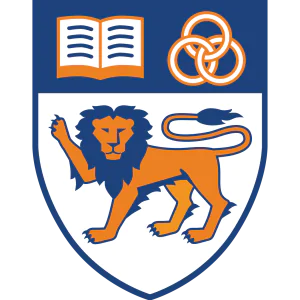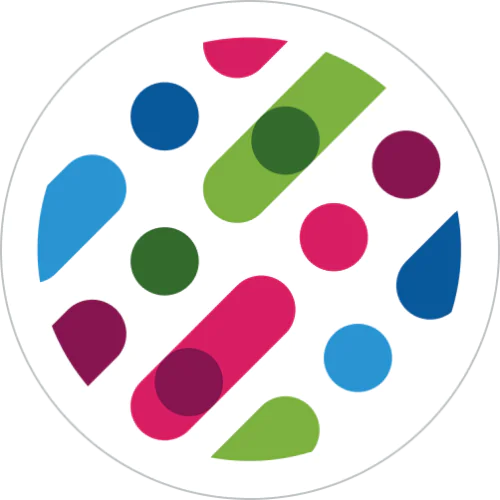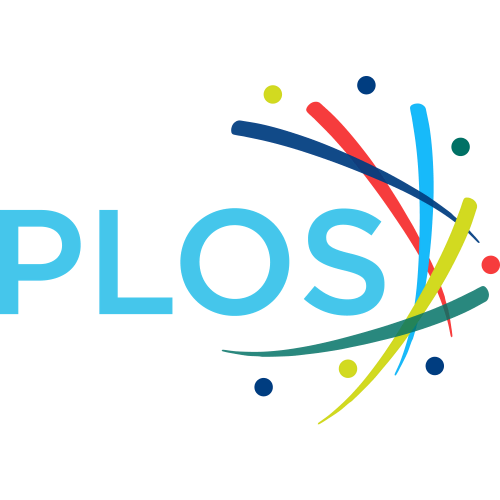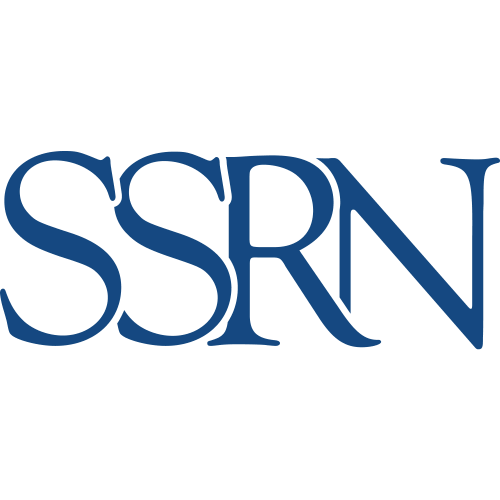Organoid single-cell genomic atlas uncovers human-specific features of brain development
Sabina Kanton
1
,
Michael James Boyle
1
,
Zhisong He
1, 2
,
Malgorzata Santel
1
,
Anne Weigert
1
,
Fátima Sanchís Calleja
1, 2
,
Patricia Guijarro
3
,
Leila Sidow
1
,
Jonas Simon Fleck
2
,
Dingding Han
3
,
Zhengzong Qian
3
,
Michael Heide
4
,
Wieland B. Huttner
4
,
Philipp Khaitovich
1, 3, 5
,
Svante Pääbo
1
,
Barbara Treutlein
1, 2
,
J. Gray Camp
1, 6
3
CAS Key Laboratory of Computational Biology, CAS-MPG Partner Institute for Computational Biology, Shanghai, China
|
6
Institute of Molecular and Clinical Ophthalmology, Basel, Switzerland
|
Publication type: Journal Article
Publication date: 2019-10-16
scimago Q1
wos Q1
SJR: 18.288
CiteScore: 78.1
Impact factor: 48.5
ISSN: 00280836, 14764687
PubMed ID:
31619793
Multidisciplinary
Abstract
The human brain has undergone substantial change since humans diverged from chimpanzees and the other great apes1,2. However, the genetic and developmental programs that underlie this divergence are not fully understood. Here we have analysed stem cell-derived cerebral organoids using single-cell transcriptomics and accessible chromatin profiling to investigate gene-regulatory changes that are specific to humans. We first analysed cell composition and reconstructed differentiation trajectories over the entire course of human cerebral organoid development from pluripotency, through neuroectoderm and neuroepithelial stages, followed by divergence into neuronal fates within the dorsal and ventral forebrain, midbrain and hindbrain regions. Brain-region composition varied in organoids from different iPSC lines, but regional gene-expression patterns remained largely reproducible across individuals. We analysed chimpanzee and macaque cerebral organoids and found that human neuronal development occurs at a slower pace relative to the other two primates. Using pseudotemporal alignment of differentiation paths, we found that human-specific gene expression resolved to distinct cell states along progenitor-to-neuron lineages in the cortex. Chromatin accessibility was dynamic during cortex development, and we identified divergence in accessibility between human and chimpanzee that correlated with human-specific gene expression and genetic change. Finally, we mapped human-specific expression in adult prefrontal cortex using single-nucleus RNA sequencing analysis and identified developmental differences that persist into adulthood, as well as cell-state-specific changes that occur exclusively in the adult brain. Our data provide a temporal cell atlas of great ape forebrain development, and illuminate dynamic gene-regulatory features that are unique to humans. Species comparisons using single-cell transcriptomics and accessible chromatin profiling in stem cell-derived cerebral organoids are used to map dynamic gene-regulatory changes that are unique to humans.
Found
Nothing found, try to update filter.
Found
Nothing found, try to update filter.
Top-30
Journals
|
5
10
15
20
|
|
|
Nature Communications
20 publications, 2.99%
|
|
|
Cell
19 publications, 2.84%
|
|
|
bioRxiv
15 publications, 2.24%
|
|
|
Frontiers in Cell and Developmental Biology
11 publications, 1.64%
|
|
|
Nature
11 publications, 1.64%
|
|
|
Cell Stem Cell
11 publications, 1.64%
|
|
|
Science advances
11 publications, 1.64%
|
|
|
Current Opinion in Neurobiology
10 publications, 1.49%
|
|
|
Current Opinion in Genetics and Development
10 publications, 1.49%
|
|
|
Cells
9 publications, 1.34%
|
|
|
Stem Cell Reports
9 publications, 1.34%
|
|
|
International Journal of Molecular Sciences
8 publications, 1.19%
|
|
|
Genome Biology
8 publications, 1.19%
|
|
|
Scientific Reports
8 publications, 1.19%
|
|
|
Neuron
8 publications, 1.19%
|
|
|
Nature Neuroscience
7 publications, 1.04%
|
|
|
Development (Cambridge)
6 publications, 0.9%
|
|
|
Frontiers in Cellular Neuroscience
6 publications, 0.9%
|
|
|
Frontiers in Neuroscience
6 publications, 0.9%
|
|
|
Frontiers in Molecular Neuroscience
6 publications, 0.9%
|
|
|
Bioactive Materials
6 publications, 0.9%
|
|
|
eLife
5 publications, 0.75%
|
|
|
Communications Biology
5 publications, 0.75%
|
|
|
Nature Cell Biology
5 publications, 0.75%
|
|
|
iScience
5 publications, 0.75%
|
|
|
Science
5 publications, 0.75%
|
|
|
Advanced Science
5 publications, 0.75%
|
|
|
Nature Reviews Genetics
4 publications, 0.6%
|
|
|
Cellular and Molecular Life Sciences
4 publications, 0.6%
|
|
|
5
10
15
20
|
Publishers
|
20
40
60
80
100
120
140
160
|
|
|
Springer Nature
157 publications, 23.43%
|
|
|
Elsevier
156 publications, 23.28%
|
|
|
Cold Spring Harbor Laboratory
129 publications, 19.25%
|
|
|
Wiley
40 publications, 5.97%
|
|
|
Frontiers Media S.A.
39 publications, 5.82%
|
|
|
MDPI
31 publications, 4.63%
|
|
|
Oxford University Press
19 publications, 2.84%
|
|
|
American Association for the Advancement of Science (AAAS)
16 publications, 2.39%
|
|
|
The Company of Biologists
7 publications, 1.04%
|
|
|
eLife Sciences Publications
5 publications, 0.75%
|
|
|
Public Library of Science (PLoS)
5 publications, 0.75%
|
|
|
European Molecular Biology Organization
4 publications, 0.6%
|
|
|
Proceedings of the National Academy of Sciences (PNAS)
4 publications, 0.6%
|
|
|
Annual Reviews
4 publications, 0.6%
|
|
|
American Chemical Society (ACS)
3 publications, 0.45%
|
|
|
Bentham Science Publishers Ltd.
3 publications, 0.45%
|
|
|
American Psychiatric Association Publishing
2 publications, 0.3%
|
|
|
S. Karger AG
2 publications, 0.3%
|
|
|
Mary Ann Liebert
2 publications, 0.3%
|
|
|
Ovid Technologies (Wolters Kluwer Health)
2 publications, 0.3%
|
|
|
Research Square Platform LLC
2 publications, 0.3%
|
|
|
Science in China Press
2 publications, 0.3%
|
|
|
Korean Society for Biochemistry and Molecular Biology - BMB Reports
2 publications, 0.3%
|
|
|
The Royal Society
1 publication, 0.15%
|
|
|
Cambridge University Press
1 publication, 0.15%
|
|
|
Social Science Electronic Publishing
1 publication, 0.15%
|
|
|
Pleiades Publishing
1 publication, 0.15%
|
|
|
American Society for Microbiology
1 publication, 0.15%
|
|
|
Hindawi Limited
1 publication, 0.15%
|
|
|
20
40
60
80
100
120
140
160
|
- We do not take into account publications without a DOI.
- Statistics recalculated weekly.
Are you a researcher?
Create a profile to get free access to personal recommendations for colleagues and new articles.
Metrics
670
Total citations:
670
Citations from 2025:
111
(16.57%)
Cite this
GOST |
RIS |
BibTex |
MLA
Cite this
GOST
Copy
Kanton S. et al. Organoid single-cell genomic atlas uncovers human-specific features of brain development // Nature. 2019. Vol. 574. No. 7778. pp. 418-422.
GOST all authors (up to 50)
Copy
Kanton S., Boyle M. J., He Z., Santel M., Weigert A., Sanchís Calleja F., Guijarro P., Sidow L., Fleck J. S., Han D., Qian Z., Heide M., Huttner W. B., Khaitovich P., Pääbo S., Treutlein B., Camp J. G. Organoid single-cell genomic atlas uncovers human-specific features of brain development // Nature. 2019. Vol. 574. No. 7778. pp. 418-422.
Cite this
RIS
Copy
TY - JOUR
DO - 10.1038/s41586-019-1654-9
UR - https://doi.org/10.1038/s41586-019-1654-9
TI - Organoid single-cell genomic atlas uncovers human-specific features of brain development
T2 - Nature
AU - Kanton, Sabina
AU - Boyle, Michael James
AU - He, Zhisong
AU - Santel, Malgorzata
AU - Weigert, Anne
AU - Sanchís Calleja, Fátima
AU - Guijarro, Patricia
AU - Sidow, Leila
AU - Fleck, Jonas Simon
AU - Han, Dingding
AU - Qian, Zhengzong
AU - Heide, Michael
AU - Huttner, Wieland B.
AU - Khaitovich, Philipp
AU - Pääbo, Svante
AU - Treutlein, Barbara
AU - Camp, J. Gray
PY - 2019
DA - 2019/10/16
PB - Springer Nature
SP - 418-422
IS - 7778
VL - 574
PMID - 31619793
SN - 0028-0836
SN - 1476-4687
ER -
Cite this
BibTex (up to 50 authors)
Copy
@article{2019_Kanton,
author = {Sabina Kanton and Michael James Boyle and Zhisong He and Malgorzata Santel and Anne Weigert and Fátima Sanchís Calleja and Patricia Guijarro and Leila Sidow and Jonas Simon Fleck and Dingding Han and Zhengzong Qian and Michael Heide and Wieland B. Huttner and Philipp Khaitovich and Svante Pääbo and Barbara Treutlein and J. Gray Camp},
title = {Organoid single-cell genomic atlas uncovers human-specific features of brain development},
journal = {Nature},
year = {2019},
volume = {574},
publisher = {Springer Nature},
month = {oct},
url = {https://doi.org/10.1038/s41586-019-1654-9},
number = {7778},
pages = {418--422},
doi = {10.1038/s41586-019-1654-9}
}
Cite this
MLA
Copy
Kanton, Sabina, et al. “Organoid single-cell genomic atlas uncovers human-specific features of brain development.” Nature, vol. 574, no. 7778, Oct. 2019, pp. 418-422. https://doi.org/10.1038/s41586-019-1654-9.
Profiles

































